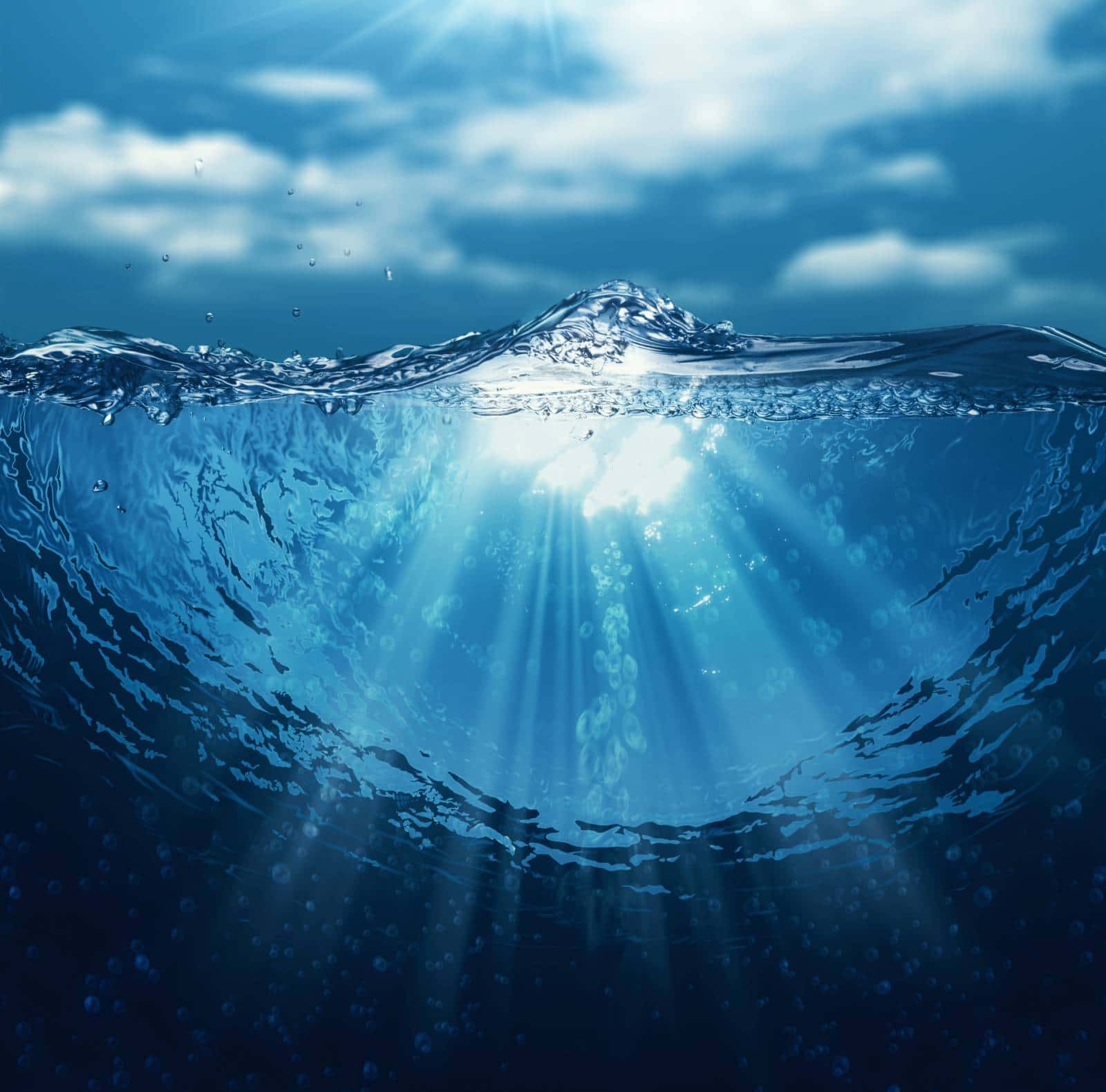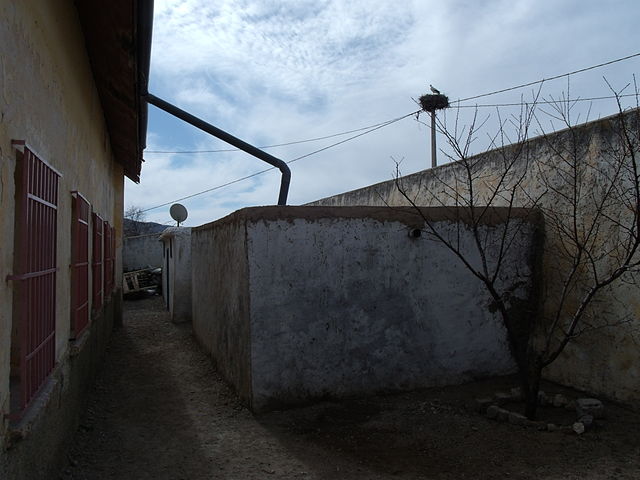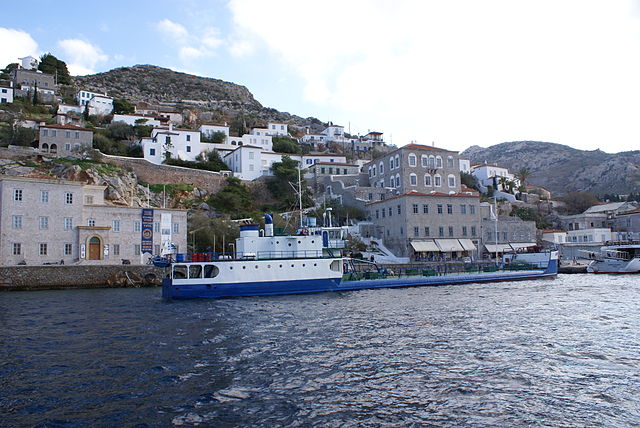
Island water shortages and stoppages are plaguing Greece this summer. Promoted for its beautiful seawater surrounding all the Greek isles and its entire coastline, many islands are suffering from a lack of quantity — and quality of tap water.
Turning on the tap and finding an abundant flow of water has become a basic expectation in civilized society of the 21st century, particularly when you are on a vacation that is meant to offer a bit of away-from-home luxury.
However, on some Greek islands, access to whiskey is easier to come by than water. Greek island water shortages and water stoppages are common nowadays.
Carol Berkley, from London, who is vacationing at an AirBnB property in the area of Marathi on Mykonos told Greek Reporter, “We had just come back from the beach. There are four of us here on the property.
“Naturally, our first plan was to wash off all the sand and the salt from our swim. But that didn’t happen until the next day,” she stated.
As Berkley explains, “One of the girls went to shower but came up empty when she flipped the faucet. We waited an hour and then contacted the property owner. He told us that due to the heat wave, there were continuous power cuts, so the pumping stations couldn’t pump water. It was the next morning when we could take a shower.”
The unprecedented heat waves across Greece prompted rolling power outages on an hourly basis throughout most of the Aegean the first week in August. Many large businesses such as supermarkets, hotels and restaurants cope with the electrical power cuts by switching to a generator. This alternative energy source, which runs on propane or gasoline, kicks in automatically when the power goes off.
With or without electrical power, water has always been problematic and challenging on islands that have never had their own natural supply. Island leadership logistics, infrastructures and technical innovation have been harnessed for the better part of the last 70 years in order to provide a steady flow of water for island residents.
However, even today, locals and visitors suffer from the chronic stoppages as well as shortages.
Ironically, Greece has one of the greatest water resource potentials per capita in the Mediterranean area. Theoretically the country should have ample water for its population and traditional water uses but the water supply is not evenly distributed in space and time.
The maximum precipitation is recorded in the western parts of the nation, where the available water resources are consequently plentiful, while in other regions of the country precipitation is much lower and available water resources are insufficient to meet the demand.
Due to this inequality in water distribution, some areas of Greece, such as the Aegean islands, face chronic water shortage problems.

The permanent population of Greece, according to the 2001 census was about 11 million inhabitants. In areas dependent on tourism, and particularly in the Aegean, water demand is intense. During the summer months, water demand reaches its peak. On some islands the summer peak can reach up to 30 times the needs of the permanent population.
Two decades ago Greece had an abundance of water resources, amounting to 15 trillion gallons. At the time, usage was only at 12 percent. And that 12 percent was divided between agriculture at 87 percent, industry at three percent and municipalities at about 10 percent.
Today, as the government targets tourism as an industry, the number of annual visitors has climbed from five million to more than 30 million in 2019. Ans consumption has of course increased exponentially.
With Greece servicing 30 million visitors — three times the amount of its population — and industries that serve tourism, water usage has more than tripled since 2000. Today water consumption in Greece is as high as seven trillion gallons as opposed to two trillion in 2000.
Local authorities are responsible for water use; financial constraints are the main reason behind the poor management and lack of planning. Responses to water shortages vary depending on the area and the conditions that prevail there.
A doctoral candidate in resource economics, Ourania Papasozomenou from Cyprus, studied water shortage issues on the Greek islands of Tinos and Syros. “In the summer, the islands look like the Sahara, and in winter and autumn you might think you are in Scotland,” Papasozomenou stated.
She said the system is straining. The drinking and service water comes from the sea. “There is hardly any groundwater on these islands. Most of the water comes from desalination plants. These plants consume a high amount of energy, which means water prices are twice that of the mainland, and they are not sustainable either. It is dirty energy from coal-fired power plants.”
Both the Syros and Mykonos Water Departments notified island residents the first week in August — during the extreme heat — that due to the power cuts, operation of the desalination units was halted. Locals and visitors were asked to be conservative with water usage because of the ongoing power cuts that stopped desalination operations and the pumping of water across the island.
According to Frantzeskos Vigliaris, the president of Mykonos Municipal Water and Sewer Operations, “Demand is up 30 percent from the same period during 2019.
“And at the same time, following two years of drought, water levels are at their lowest for both reservoir dams. I am asking everyone to be conservative with water use. The desalination facility has doubled its capacity since 2019 but we still are unable to meet the demands because of longstanding issues with the system.”
Water Sourcing for the Aegean
Water sourcing for the Aegean includes tapping groundwater sources, bringing in boatloads of water from the mainland by tanker, constructing reservoir dams to capture rainwater, and hydration that trickles down from mountains as well as desalination plants.
These are located both on land and at sea, and operate with the energy of wind turbines or solar panels. Many islanders send rainwater collected from their roof tops into underground storage tanks to have a backup beyond the municipality’s water works.
Artesian wells and natural lakes are limited on the Greek islands. Meanwhile, rainwater that flows from the mountains, unless rerouted to a manmade reservoir, goes straight into the sea.
Rooftop rainwater cisterns are used to provide drinking water, domestic water, water for livestock, water for small irrigation, and a way to replenish groundwater levels. Such rainwater harvesting is one of the simplest and oldest methods of self-supply of water for households and residential and household-scale projects.
According to Papasozoumenou, “The islands’ technical and physical conditions are not the main cause of the unreliable and expensive water supply, but rather political reasons are. For example, there is a regional administrative officer who has been looking to institutionalize the utilization of rainwater for years. His idea is for each newly constructed building to have a mandatory rainwater tank.”
Papasozomenou talked to 35 stakeholders from local government, members of the responsible ministry in Athens, water experts and environmental activists, while researching her thesis. “The legislature in Athens does not require rainwater tanks and instead prioritizes desalination plants. The local government has its hands tied.”
Institutionally and financially, the central government has decision-making authority over the island governments, a complicated system consisting of at least three sub-levels without decision-making powers and sometimes an unclear mandate. “Given the central control and top-down structures, it is very hard for local initiatives and non-governmental organizations to set up smaller projects to solve the water problems,” stated Papasozomenou.

Roof Rainwater Offers One Solution for Water Shortage
Rainwater harvesting, which provides an independent water supply, is often used to supplement the main supply. Collecting rainwater has been used on a large scale in Europe since 1993 at Frankfurt’s International Airport and in London at the Veledrom.
When drought occurs, rainwater harvested in past months can be used. If rain is scarce but also unpredictable, the use of a rainwater harvesting systems can be critical to capturing the rain when it does fall.
Greek islands with arid environments use rainwater harvesting as a cheap and reliable source of clean water. It can enhance irrigation and decrease the demand for water from wells, enabling groundwater levels to be further sustained rather than depleted. However, the Cyclades have the lowest average rainfall of all prefectures and their resources of underground water that supply wells are negligible.

Dams Not Perfect Solution For Island Water Shortage
For permanent water shortage other structural solutions are preferred. Dams and reservoirs are used where there are funds available, and locations suitable, for their construction.
Thanks to EU funding many reservoir dams have been constructed or improved upon in Greece. Works carried out included water diversion, such as isolation of sinks, building drainage ditches, water intakes and water-transport tunnels. In addition there has been the construction of access roads, connections with utility networks, permanent monitoring facilities and electromechanical plants put into operation.
Is there space for more reservoir dams in Greece? According to a study conducted by the Ministry of the environment in 2019 Greece’s low exploitation of hydropower potential, which is currently at 31 percent, allows for further development of hydroelectricity, which is the most effective renewable technology. The multipurpose character of large hydropower projects can also help resolving water scarcity and groundwater degradation problems.
Formulating new hybrid renewable energy systems, by mixing hydroelectricity with other renewable sources such as wind, solar, and biofuels is one option. Large water projects may be preferable than equivalent small ones because they are energy-efficient and multi-purpose, more resilient against the perpetually changing climate, less damaging for the environment and the economy of scale.
Proper design and control of water projects and associated hydro systems can ensure a fair equilibrium between anthropogenic and environmental needs.

Water By the Boatload Via Tanker to Supply Islands
In cases where the quality or quantity of groundwater does not meet the required standards, an alternative way of ensuring water supply is importing water from neighboring, richer in water resources areas using water tanker ships or even underwater pipes. This was the method that was used from the 1960s and still is used today, where reservoir dams or desalination plants do not exist.
Water demand has steadily increased in the last decades on small Greek islands as a result of escalated tourism. Due to the limited local water resources, decades ago the only option municipalities had to manage water supply to residents was by hauling water by ship. Tankers coming from the mainland with hulls full of water would arrive, pumping the supply into water trucks that would carry them to the island’s water storage facilities. This method for water supply entailed significant costs in cash, energy and time.
Until recently, many islands had to rely on expensive water transfers from the mainland, but in the 1960’s some islands began exploring desalination. After many failed attempts, desalination is now being proposed as the best long-term water solution for the islands. The funds required to transport water for two years were enough to have set up desalination plants on each of the islands.

Desalination Plants Becoming Prolific Across Aegean
Desalination is the process of removing salt and other minerals from sea water to create potable water. It is becoming an increasingly common method in areas that lack access to freshwater, but where seawater is plentiful and can easily relieve island water shortages.
One of the most common desalination methods is called multi-stage flash distillation. This process uses heat to evaporate the water, leaving the salt behind. Another common method is reverse osmosis desalination, in which seawater is pumped through a series of filtration membranes.
Both methods are effective, but use a lot of energy. With few Greek islands connected to the national power grid, this has been a major obstacle. The solution has come with significant improvements in renewable energy, especially wind and solar, making desalination more cost effective while lessening impact on the environment.
Greece already has enough desalination capacity to produce approximately 53 million gallons of fresh water a day. The national government is set to expand the number of small-scale, decentralized desalination plants to provide each island with complete water autonomy and eliminate island water shortages.
Attention has been drawn to a solar powered desalination unit that uses reverse osmosis to provide a modest 1300 gallons a day for a military base on Strongili. The system cost around $162,00 but is expected to pay for itself in as little as four years. Two larger plants on Kastelorizo, costing around $1.1 million, are now producing 106,000 gallons of water a day at just one-fifth of the cost of shipping water.
Desalination is now bringing fresh hope to many islands.
Iraklia Goes From Water Tankers to Desalination
Iraklia, a small island near Naxos, has an annual water supply need of approximately 5.2 million gallons. Tankers were used to transport supplemental water to the island. This was inefficient, vulnerable to bad weather and costly, putting a huge burden on the state’s budget. For most of the Aegean islands, the government absorbs a portion of the cost to transport supplemental water by tanker to the islands, following the implementation of the Directive 2000/60/EC.
Petros Gavallas, the president of the island’s municipality, said that thanks to their newly installed desalination plant, the water problem has been solved. “With a daily capacity of 80,000 gallons of drinking water, it covers the needs of the island’s 141 permanent residents and 1500 visitors.”
The project’s objective was to make Iraklia more self-sufficient and cost-conscious with its water sourcing. After exploratory drilling failed to reveal a natural well, a state-of-the-art desalination plant was constructed in Livadi.
In addition to desalinating water directly from the sea, the new plant is connected to two existing water storage tanks that have a combined capacity of 291,000 gallons. This helps provide for future water needs. The project ensures the self-sufficiency of the island, even during the busy summer season when water use tends to significantly increase. The project saves valuable public resources, which can now be reallocated to other important projects.
Outdated Pipes, Leaks Make Water Supply Inefficient On Islands
Another serious problem is Greece’s damaged and outdated water infrastructure. According to some sources as much as 60 percent of the total water supply is wasted due to leakage. It is estimated that about 5,000 miles in pipes will soon need to be replaced. Municipalities are responsible for this infrastructure but all too often there seem to be more pressing budget needs than investing in invisible underground pipes.
Overall, water desalination can become a key in meeting the increasing water needs, especially in water-stressed, isolated areas with easy access to seawater, such as the small dry islands located in the Aegean Sea.
In terms of cost, despite the fact that a high initial investment is typically required, funds expended were recouped in all cases examined, with payback periods ranging from five to fifteen years, depending on the technological solution chosen and the characteristics of each island.

Offshore Desalination Plant to Combat Water Shortages
The gradual phasing-in of renewable energy sources to power desalination plants is already occurring. The Polish shipyard Crist is creating the Floating WINDdesal, a wind-powered seawater desalination unit.
There is great need for new approaches to water management that will serve to mitigate and promote sustainable use of the available resources.
Greece is currently ranked 26th for water stress in the world and its climate change predictions are bleak. Around 30 percent of Greece could become desert over the next few decades.
While there are solutions that could help mitigate the worst future water shortages, it is a challenge that everyone in Greece is going to have to help overcome. Building efficient desalination plants on islands will likely provide residents and tourists with a refreshing glass of clean water, but everyone will need to be more mindful of what it took to get that water into the glass.

Only Andros Doesn’t Suffer Water Shortage, With Its Own “Pygi”
The one island of the Aegean excluded from problematic water service is Andros. It has an abundant source of water and even has a natural spring, the pygi Sariza, as it is known in Greek, dating back more than 300 years.
The legend says that Pasha San Riza, who lived on the island of Evia, lost his fez in a stream and found it at a spring in the village of Apikia in Andros. So the source, the pygi, was baptized Sariza.
Built in 1787, the Sariza pygi was constructed at the expense of and the supervision of Makarios Polemis, although the exact renovation of the marble fountain of the source remains unknown. The source has been used for over 300 years for the water supply of the inhabitants to irrigate their fields and launder their clothing.
Sariza, the island’s water-bottling factory, was built near the spring in 1929. The company’s water is sold all around Greece. In addition to the source of Sariza, there is a smaller source in the area of Katasyrti.
A sign near the source also says this: “Hello stranger; remember when you get back home that first of all you live because of me.”



Comments
Post a Comment